Adaptive Optics using Laser Guide Stars
Atmospheric turbulence blurs the light from distant stars and galaxies
Three images of Arcturus, a bright star

Adaptive
optics with a natural guide star
Measure
details of blurring using bright star near the object you want to observe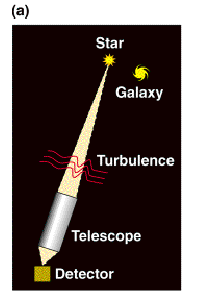

Use
a computer to calculate the shape to apply to a special "deformable
mirror," to correct the blurring

Light
from both the bright star and the astronomical object is reflected from
the deformable mirror, which removes the blurring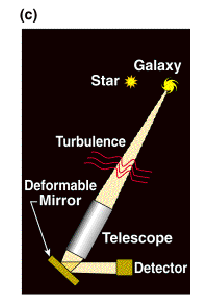

Adaptive
optics with a laser guide star
If there is no bright natural star nearby:
Use a laser beam to create an artificial "star"
For example a yellow laser tuned to the wavelength of 589 nm will excite sodium atoms at an altitude of ~100 km in the Earth's atmosphere
Makes a yellow artificial "star" that can be used to measure atmospheric turbulence
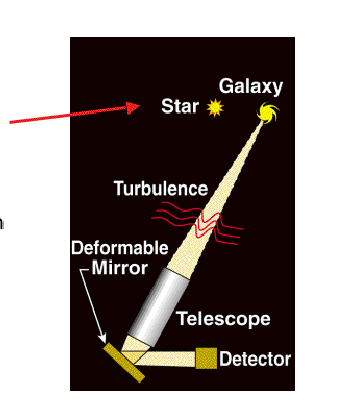
Photos
of laser guide stars:
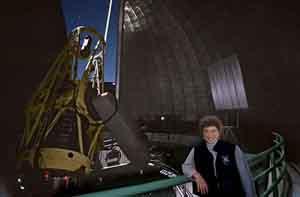
Laser guide star at Lick Observatory
(Photo credit: Laurie Hatch, Lick Observatory)
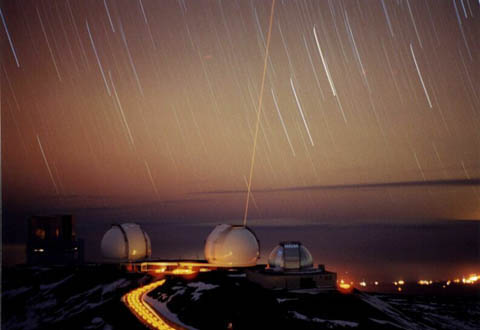
Laser guide star at Keck Observatory
(Photo credit: John McDonald, Canada-France-Hawaii Telescope)